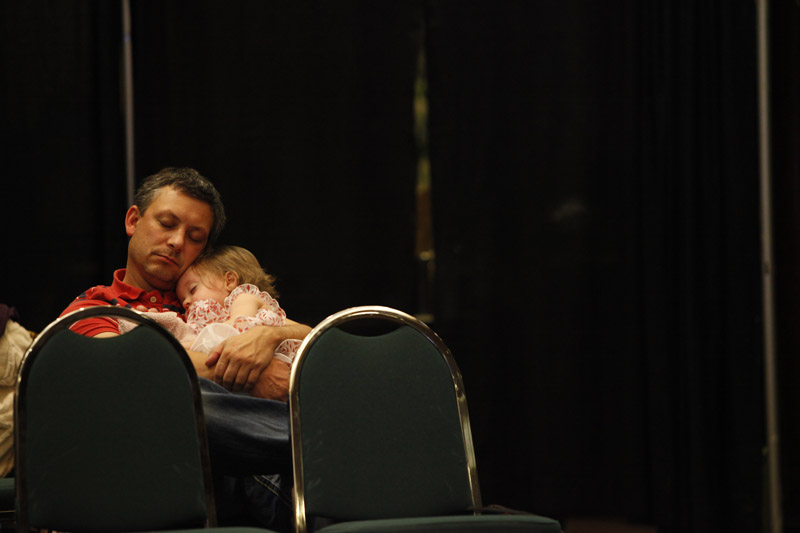For my capstone 1-day project, I went to the Mizzou Idol compeition, following Monica Ayala-Talavera, a sophomore at MU. I met up with her at her sound check and stayed with her throughout the evening. I had a good time meeting her family, and enjoyed the behind the scenes look during the second year of the Mizzou Idol competition. I hope that you enjoy experiencing the competition with Monica as well.
Makeup sits on Monica Ayala-Talavera’s dresser as she prepares to compete in the Mizzou Idol competition on Feb.18, 2011. Monica, a sophomore, was one of 13 contestants in the second year of the competition.
Monica puts on her mascara in her apartment before heading to Jesse Auditorium. As she got ready, Monica relaxed with her boyfriend and mother, who was in town for the competition, by watching YouTube videos.
Monica sways backstage to calm down before her performance in the first round of the Mizzou Idol competition. For her first song, Monica sang “Listen” by Beyonce Knowles.
Monica claps for a fellow contestant as finalists are announced during the competition. Four wildcard entries sang for a chance to be the 13th contestant in the competition. Then each contestant sang one song, and received comments from a panel of judges. Then the contestants were narrowed down to four singers for the second round.
Monica stands and listens to comments from the judges after her performance in the first round. The judges had mostly negative comments, saying she chose a song that was too big for her.
Monica sits alone in the dressing room after her performance in the first round. She didn’t feel like she preformed well, saying her mouth went dry part of the way through her song. Monica didn’t make it to the second round of the competition, and went to sit in the audience with her mother and boyfriend after the finalists were announced.








































